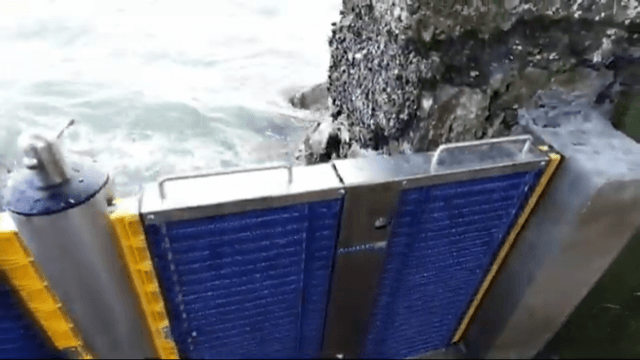While mostly associated with floods, the term "sandbagging" is pretty common for the sports lexicon. It means to underperform to get the advantage in the game and then finish high when no one expects you to.
In a way, this is exactly what floods have been doing to humanity for the previous several decades. Eventually, the recent report issued by Climate Central shows that until now, we failed to realize our vulnerability to floods.
This year, when floods are raging worldwide simultaneously - from Russia to Australia - it is high time that humanity started taking the issue seriously and evaluate its chances to withstand the disaster.

Flooding knocks at our door.
When we say that floods have been "sandbagging" for a while, we mean that an ordinary city dweller today does not even know how vulnerable the area is to floods and what kind of anti-flooding solutions exist on floods the market and how to use them.
At the same time, the climate is changing, and the changing world temperatures are causing the ice to melt and raise the ocean level. According to recent research, if the process continues the way it goes right now, the world ocean will rise at least 5 feet by the end of the XXI century.
Does not seem like too much, right? This is exactly what the idea of the flood "sandbagging" is all about. The numbers don`t really look that horrid when we talk worldwide. However, the flood tendencies that are already happening today indicate that the disastrous scenario is right behind the door.
The emission levels, water, and air pollution are not remaining on the same level. They constantly grow, ensuring that the catastrophic sea-level rise - one of the most potent "end of the world" scenarios can happen much faster than we all expect.
Over 90% of the world's ice is concentrated in Antarctica. This amount of water is just enough to raise the sea level by over 200 feet. And the melting process is happening faster than scientists have predicted before.
Nature has really been "sandbagging," making us believe that the climate changes are insignificant and we have enough time to enjoy nature`s treasures without any tangible consequences. Apparently, we don`t.
Sandbagging is a daily routine.
If you live in the coastal area or next to any significant water body, you might have already realized that floods are becoming a routine annual event. For some of us, they even appear to be a constant threat to our properties and buildings.
More and more people have learned the principles of sandbagging since childhood or prefer to install flood gates at their water forward properties as the only possible way to protect from unpredictable disasters.
According to the recent forecast from the Environmental Agency, over 90% of American coastal cities and communities will be literally wiped off the face of Erth with chronic floods.
In some areas sandbagging already appears routine, and those initially temporary dimes seem to stay on the streets forever. Others only start experiencing the first alarming notifications from nature with occasional unexpected floods that cause significant damage to the property, local community, and economy.
According to the scientists` speculations, there are two possible scenarios for those areas in the next 50-70 years:
- Eventually, they will go under water entirely and permanently, which means that neither classic sandbagging nor innovative flood gates will be efficient against the disaster anymore;
- Routine floods will make it impossible to conduct a normal and productive lifestyle and economy in those areas. The property will devalue rapidly, and investors will leave those areas searching for a more stable and secure business environment.

Considering the existing population of the coastal areas and demographic growth in them, the described scenario implies that over 10% of the American population may find themselves forced to relocate and suffer severe economic crisis due to flooding by 2050.
Those rates will definitely influence the country`s overall well-being. Unemployment, business losses, and the destruction of the most attractive touristic infrastructure and real estate will inevitably lead to a nationwide economic and social crisis incomparable to any destructive event the country had to face until now.
According to UCS analysis and projections, over 300,000 American Real Estate located in coastal areas or next to big water bodies face significant flooding events that can cause severe economic consequences at least once a year.
And though it is impossible to prevent the upcoming disaster thoroughly, we can do our best to postpone the tragic consequences and minimize floods` impact on our lives.
You must study anti-flooding solutions such as sandbagging and flood gates as soon as possible and make an informed decision about the perfectly suitable one for you and your property.
Ensure to contact your local Emergency Services or Environmental Agency branch to learn about the risks of floods in your area, and join the alarm notification service to have thorough information about possible upcoming disasters.

Whether planning to invest in residential real estate or a business located in coastal areas, consider flooding as one of the primary threats to your money and get thorough information regarding the area.
According to the "Underwater" report issued by the Cambridge University in 2018, Miami Beach, FL, Hoboken, NJ, and Atlantic City, NJ area at the biggest risk to go "underwater" in the observable future. And the recent tragic event with the residential building collapse in Miami might be the proof of this theory and the first alarming sign for the whole nation.
Whether you choose to sandbag, temporary flood gates, or any other anti-flooding solution, make sure to contact Dam Easy. Our experts will be happy to answer all your questions and describe the most advanced, innovative anti-flooding solutions on today`s market that will help you protect yourself, your property, household, or business.
Φράγμα πόρτας φραγμού πλημμύρας

$949.00
DAM EASY® FLOOD BARRIER ΠΟΡΤΑ ΦΡΑΓΜΑ Οι πλημμύρες γίνονται πιο συχνές σε όλο τον κόσμο. Αυτό που κάποτε ήταν ένα φαινόμενο 100 ετών είναι τώρα μια εποχική τάση που πρέπει να αντιμετωπίσουν οι ιδιοκτήτες σπιτιού. Γι 'αυτό ακριβώς… Read More



